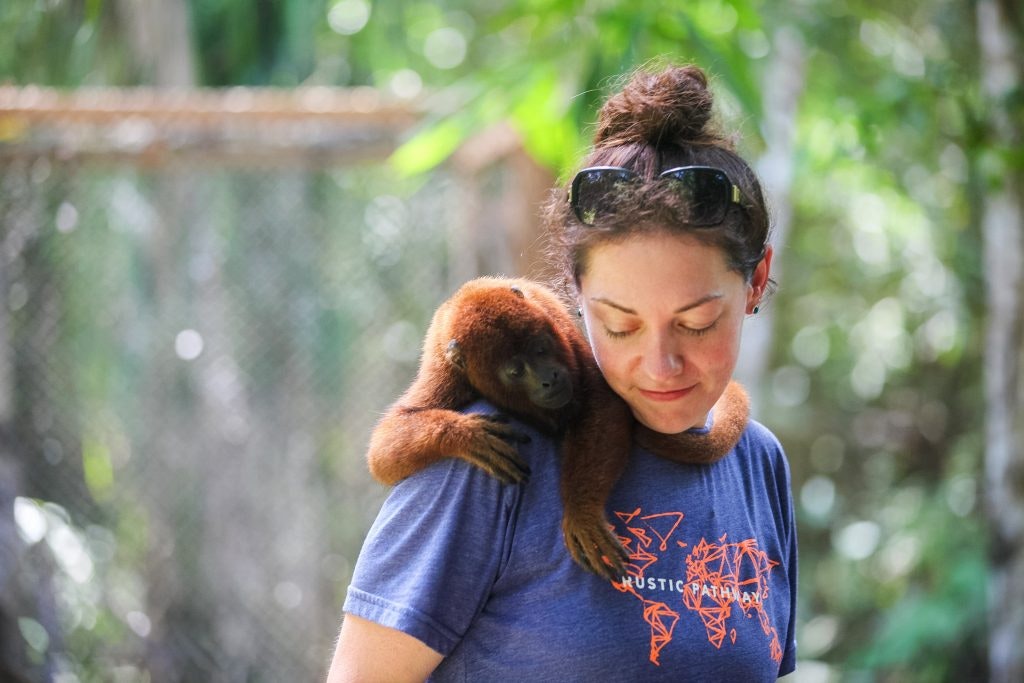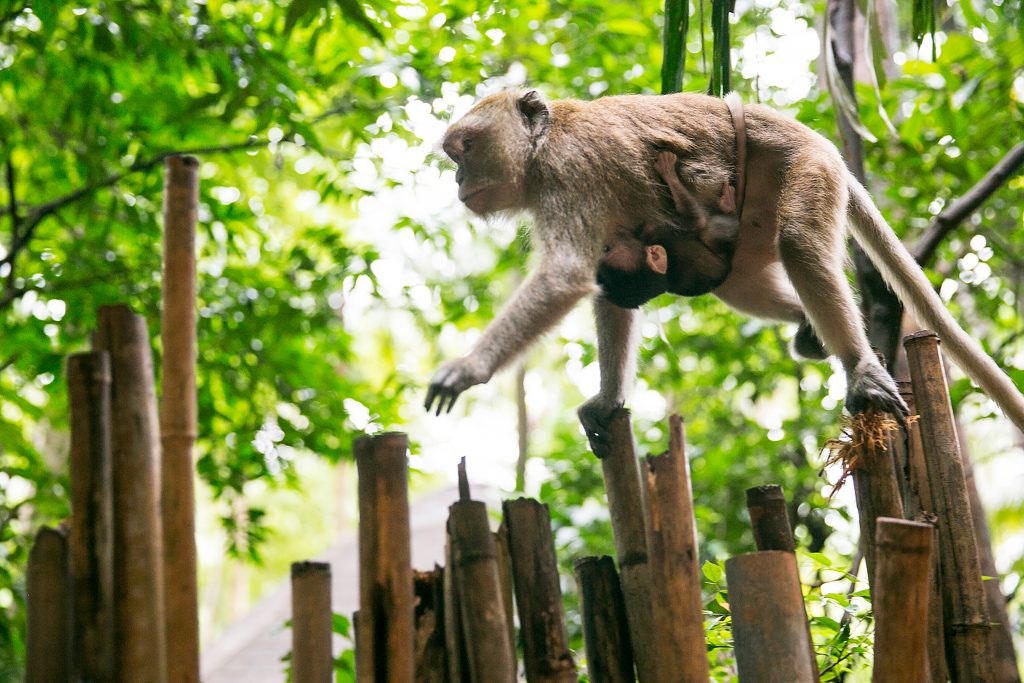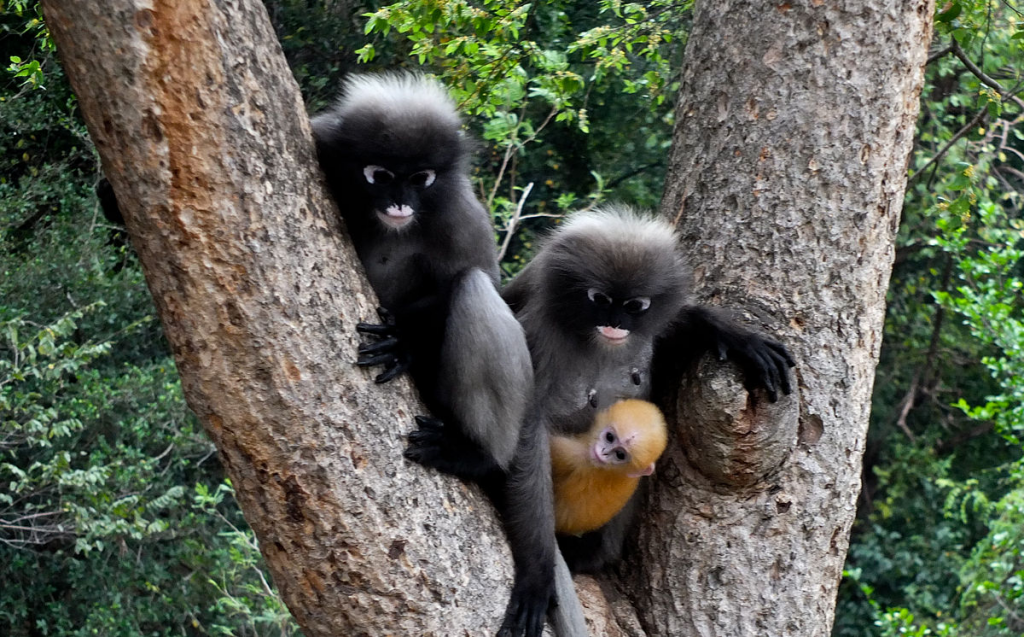One of the joys of Rustic Pathways travel programs is getting to see adorable, interesting, and sometimes odd animals that aren’t in your hometown. The rainforests of the world may be the best place to do this since they are packed with animal species – if you can find them. Some animals in the rainforest are much easier to spot than others. Here are just a few of the animals you may see while traveling with Rustic Pathways.
In addition to tropical rainforests, temperate rainforests are also fascinating. These forests, found in regions like Asia, Africa, and North America, have cooler weather and unique animal populations distinct from their tropical counterparts. Here are some of the fascinating rainforest animals you can see on a Rustic Pathways student travel program around the world.
Key Takeaways:
- Rainforests are home to a wide range of fascinating animals that students may encounter on Rustic Pathways trips, including toucans, howler monkeys, sloths, and blue morpho butterflies.
- Wildlife varies by region, from Central and South America’s sloths and poison dart frogs to Thailand’s macaques and dusky leaf langurs, and even musky rat-kangaroos in Australia’s Daintree rainforest.
- Many of these animals play vital ecological roles, such as seed dispersal and insect control, and some—like Asian elephants and certain toucans—are endangered or threatened.
- Rustic Pathways programs offer students the chance to observe and even help protect these animals.
Toucans
Toucans are one of the many species of birds that thrive in the rainforest canopy. There are 40 species of toucans, and they play a key role in dispersing seeds throughout the rainforest habitats, including the emergent layer and understory.
These intriguing birds may cross your path during trips to Costa Rica or Peru. Toucans are loud, and their “singing” sounds more like a croaking frog. Some species also can make other noises, including barking and growling. Because of their larger bills, toucans aren’t very graceful when flying, but they have no trouble making friends. They often live in groups, though it’s believed they are monogamous in their relationships.
Though toucans are widespread, not all of them are safe. In Peru, coca growers took over the yellow-browed toucanet’s range, so this bird is now considered critically endangered.
Howler Monkeys
When it comes to noise, howler monkeys will certainly do a good job competing with the birds. They are, in fact, considered the loudest land animals. You may hear them while in Central America or South America, particularly in the Amazon rainforest. The mammals use their howling to help map out their territory, so different groups can get into howling matches.
Luckily for local villagers, these monkeys sleep a lot so they can digest the leaves they eat and survive the heat. Like toucans, they are also quite sociable and live in groups of ten to fifteen monkeys, often within the rainforest canopy or the understory.

Copyright: © 2015 Rustic Pathways
Howler monkeys have a very strong sense of smell and can detect fruits and nuts from long distances, even those hidden under dense tropical foliage. Fruits are also the main source of food for other monkeys, like the spider monkeys that can sometimes be seen swinging swiftly through the treetops. Students may run into these animals while traveling in the Heart of Jungle program on the Osa Peninsula.
Other monkey species that may be spotted include squirrel monkeys and capuchin monkeys. Capuchins can jump up to nine feet and are known to be quite trainable.
Macaque Monkeys
Thousands of miles away in the rainforests and towns of Thailand, visitors often encounter macaque monkeys, which spend much more time on the forest floor compared to other species. Their bold behavior can be a nuisance since they are known to steal food and other items.

Copyright: © 2014 Rustic Pathways
A lesser-known primate, the spectacled or dusky leaf langur, may be more elusive. These monkeys live in the dense tropical Ituri forest and other tall tree habitats. Students may spot them in the Khao Sok National Forest during the Marine and Rainforest Conservation program. These monkeys prefer tall trees and look like they are wearing glasses or spectacles, hence the name. Their babies are bright orange when born, creating an interesting sight.
>> Help Protect Rainforest Animals in Thailand.
Blue Morpho Butterfly
One of the brightest and most beautiful butterflies that can be found in the tropical rainforest is the blue morpho butterfly. This species is commonly found in Costa Rica and throughout the rainforests of Central and South America. It is one of the largest butterflies in the world, with a wingspan that ranges from five to eight inches. Blue morpho butterflies are also popular attractions in butterfly houses at museums and zoos due to their striking appearance.

Copyright: Rustic Pathways
The butterflies are iridescent blue on the backs of their wings, but the underside is dull brown with eyespots. This coloring helps them blend into the rainforest floor, giving them protection from predators. The blue morpho butterfly has a lifespan of only about 115 days, making their beauty a fleeting sight.
Sloths
Who can resist a sloth – one of the stars of the animated movie Zootopia. These slow-moving creatures are found throughout Central and South America. They survive by moving slowly, helping them blend into the canopy layer where they spend most of their time.
Copyright: Rustic Pathways
Their multi-chambered stomach allows them to eat vegetation that other animals can’t digest, taking about two weeks to fully process a meal. Their slowness also means they only descend from the treetops about once a week to relieve themselves, which helps them avoid predators on the forest floor. Sloths also can rotate their heads like owls to keep an eye on the activities around them.
Tapirs
Tapirs may not win any beauty awards, but they are among the interesting animals found in both the Amazon rainforest and Thailand’s temperate rainforest. They tend to be about six and a half feet long and use a behavior known as the flehmen response to detect smells, raising their snouts and showing their teeth.
These creatures need this ability to help find the 85 pounds of vegetation they consume each day. Tapirs play an important role in rainforest habitats by spreading seeds, similar to toucans.
Musky Rat-Kangaroos
If you join the Seven Wonders of Australia program, you may encounter musky rat-kangaroos in Australia’s Daintree rainforest. These creatures have a musky odor and rat-like features, such as their tails.
Musky rat-kangaroos are the smallest members of the kangaroo family, and they hop on all four limbs. They live primarily alone, though they may feed in small groups. These animals are active during the day but are shy and quick, making them difficult to spot.
Asian Elephants
The elephants in Thailand and Laos are smaller than African elephants and have differently shaped ears. They can reach about ten feet in height at the shoulder. These elephants often walk more than three miles each day, navigating through the rainforest in search of food.

Copyright: Rustic Pathways
Asian elephants are listed as endangered species due to threats from poaching. Students participating in the Southeast Asian Adventurer program have the opportunity to help care for these elephants, walking with them through farmland and jungle forest.
Poison Dart Frogs
Poison dart frogs are some of the most striking amphibians in the tropical rainforest. These frogs are known for their bright colors, which can range from blue, yellow, green, and red. The colors serve as a warning to potential predators about their toxicity.
These frogs live in the rainforest floor and understory layers, where they hunt insects. Some indigenous cultures use the toxins from these frogs to coat the tips of their darts, which is how they earned their name. Despite their small size, poison dart frogs are crucial to the ecosystem, helping to control insect populations.

